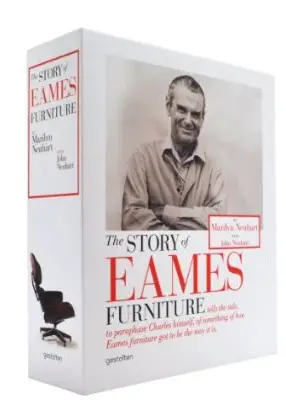The Eames ESU was born to be a flexible and innovative product, it was the result of different assembled parts available in many combinations and materials.
The Eames ESU structure was made up with vertical and horizontal elements.
First the fixed vertical supports -in different lengths- that made the L-section steel bars.
Then, horizontal shelves in lacquered plywood and finally vertical panels forming backs and sliding doors in several materials including embossed plywood, perforated metal and Masonite.
The single parts come in many different finishes and colours including sliding doors, open-back wire, X-frame braces and three-drawers systems.
All these elements could be assembled obtaining an highly customized furniture, a kit of mass-producible and interchangeable parts basing on the end user’s needs.
The Eames ESU was manufactured by Herman Miller from 1950 to 1955 and again from 1998 onwards.
Despite its innovative layout and countless possible combinations that made it a revolutionary product for its time, it was too far from the buyers expectations.
Probably the customers of the time were not ready for such an high level of modularity and high tech.
More than for its commercial success the importance of the Eames ESU in the mid-century design history is that it set a trend for storage unit that would become e norm from that moment on.
The ESU is emblematic of the Charles and Ray Eames’ vision in solving interior decor problems in an innovative and functional way and -because of he X frame supports- remembers other classic Eameses’ projects like the Wire Chair and the Wire-base Tables.
Check the Resources pages to learn about more mid-century iconic objects.
If you, instead, would like to read about the story of Charles and Ray Eames and how they created the most amazing furniture of the mid century period, you should definitely give a chance to The Story of Eames Furniture.
An amazing book-interview written by two formal colleagues of Charles and Ray during the legendary years of the Eames Office in Santa Monica. You can find the book here.
If you found this article interesting, don’t forget that you could discover much more about mid-century joining the completely free and spam-proof Mid Century Home mailing list, now!
You will receive only a weekly email with exclusive content that I don’t publish on the blog.

